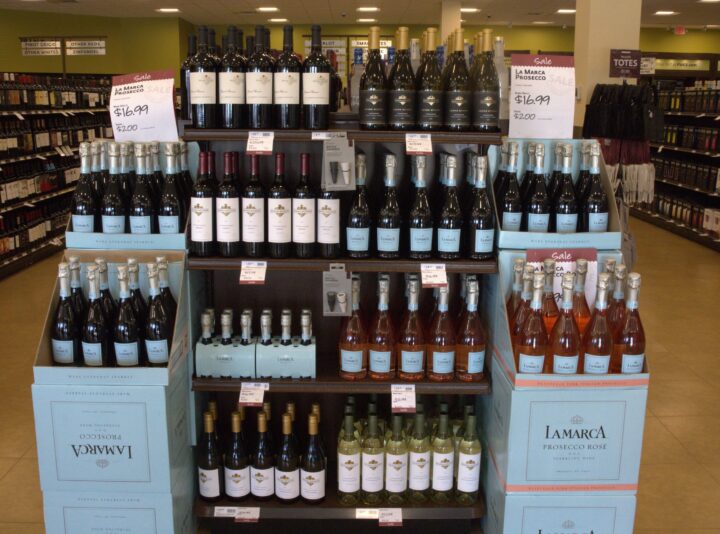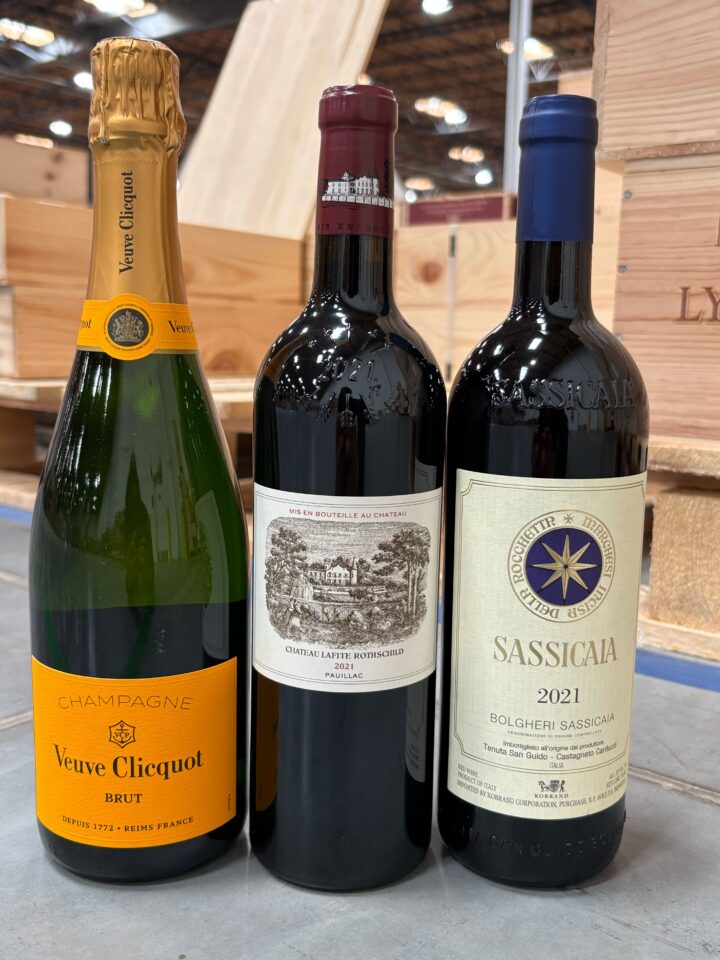
Beverage alcohol retailers show their resilience as wine tariffs join a long list of recently emerging challenges. “The full impact of federal tariffs on prices of wine and spirits is still unknown, and it will likely take additional time to feel the effects on individual product categories and brands,” says Darrell Clarke, chairman of the Pennsylvania Liquor Control Board (PLCB). “All of the items on our shelves right now were purchased before implementation of tariffs, and we have had no requests from suppliers to increase costs or retail prices due to tariffs.”
New tariffs were implemented on August 7 in the United States for wines imported from major producers, including those in the European Union (EU). A preliminary trade deal with the EU lowered tariffs to 15% from a potential 30%-50%. Wines imported from New Zealand and Israel also have a 15% tariff. A baseline 10% tariff on all imported goods implemented in April remains in effect on wines from Australia, Argentina, and Chile. While the U.S. and foreign governments continue to negotiate new trade deals, South African wines face a 30% tariff.
Tariff negotiations unfold as wine sales nationwide are declining. In Pennsylvania, imported wine dollar sales decreased 6.3% to approximately $16.34 million on an 8% category unit slide year-to-date through August 19, according to the PLCB, which is the largest wine buyer in the United States. Leading imported volume brands Yellow Tail ($8.59 a 750-ml.) and Cavit ($10 a 750-ml.) — No. 1 and No. 2, respectively — are both down double-digit rates in volume and sales at PLCB retail stores, but No. 3 Black Box ($24 for 3 liters), No. 5 LaMarca Prosecco ($20 a 750-ml.), and No. 9 Kim Crawford Marlborough Sauvignon Blanc ($18 a 750-ml.) are up single digits in units and dollar sales. “Interestingly, there was a 3.4% shift in sales from domestic wines to imported wines between January 1 and August 19, 2025,” Clarke says.

At San Francisco, California-based Wine.com — the largest online wine retailer in the United States — imports comprise 55%-60% of overall wine sales. “The thing that has changed is not consumer buying patterns but more the industry wanting to protect itself on who’s going to eat the price depending on where stuff lands,” says Wine.com CEO Mark Pinho. “We have seen average selling prices in the past year going up across the board and that might be contributing to consumers purchasing less. There are so many things going on in the wine industry right now, pinning something on one cause or effect is difficult.”
When the original tariffs were announced in March, Wine.com saw a two-week period where French and Italian wines sales spiked up and then went back down “Consumers wanted to stock up fearful of what pricing might do” Pinho says. “Interestingly they didn’t pale. There has been no shift in imports versus domestic sales.”
The volume of wine sales from Northern California has increased at Wine.com but dollar sales have remained relatively flat. “There has been a lot of discounting on Northern California wines because there is so much wine in California right now,” Pinho says. “I would have thought we would have skewed more California than previous years because pricing has gotten better on a bunch of these wines and there are more specials to be had. The reality is people want imported wines.”
Of Wine.com’s overall sales, French Bordeaux wines are No. 1, and wines from the rest of France and Italy take the No. 2 and No. 3 spots, respectively. The company’s top-selling wine brand from each of those geographical designations are Chateau Lafite Rothschild ($95 a 750-ml of 2020 Rothschild Anseillan to $1,800 a 750-ml. of 2000 Rothschild); Veuve Clicquot Yellow Label Brut ($69.97 a 750-ml.); and 2022 Tenuta San Guido Bolgheri Sassicaia ($319.97 a 750-ml.). “The differential on tariffs is the bigger story,” Pinho says. “What happens to access to South African and other wines if tariffs are going to be that high? At the lower end, people will shift. At the higher end, people won’t care because they are buying it for a reason.”
In Westborough, Massachusetts, Ryan Maloney, owner, Julio’s Liquors, agrees that wine tariffs won’t have much of an impact at the higher end, but the situation raises a lot of unanswered questions. “For a certain point of time, some producers said they would absorb the tariffs,” Maloney says. “For smaller producers and importers, it’s a bigger issue. A lot of these guys can’t absorb it. If it’s not absorbed, retailers will be working on smaller margins. If they can’t absorb it, it is going to get passed on to the consumer.”
While the impact of wine tariffs hasn’t yet hit the market, Maloney notes the alcohol industry already faces bigger challenges, including those from recreational cannabis, a decline in alcohol consumption, and a lackluster economy. “There are a bunch of things going on that as an industry we need to start pooling our resources together,” Maloney says. “We should all be uniting together to make sure the sale of alcohol is being protected. There are a bunch of things plaguing our industry. I would rather have a free-flowing economy system with no tariffs, but maybe it’s time to fix some of the other problems.”